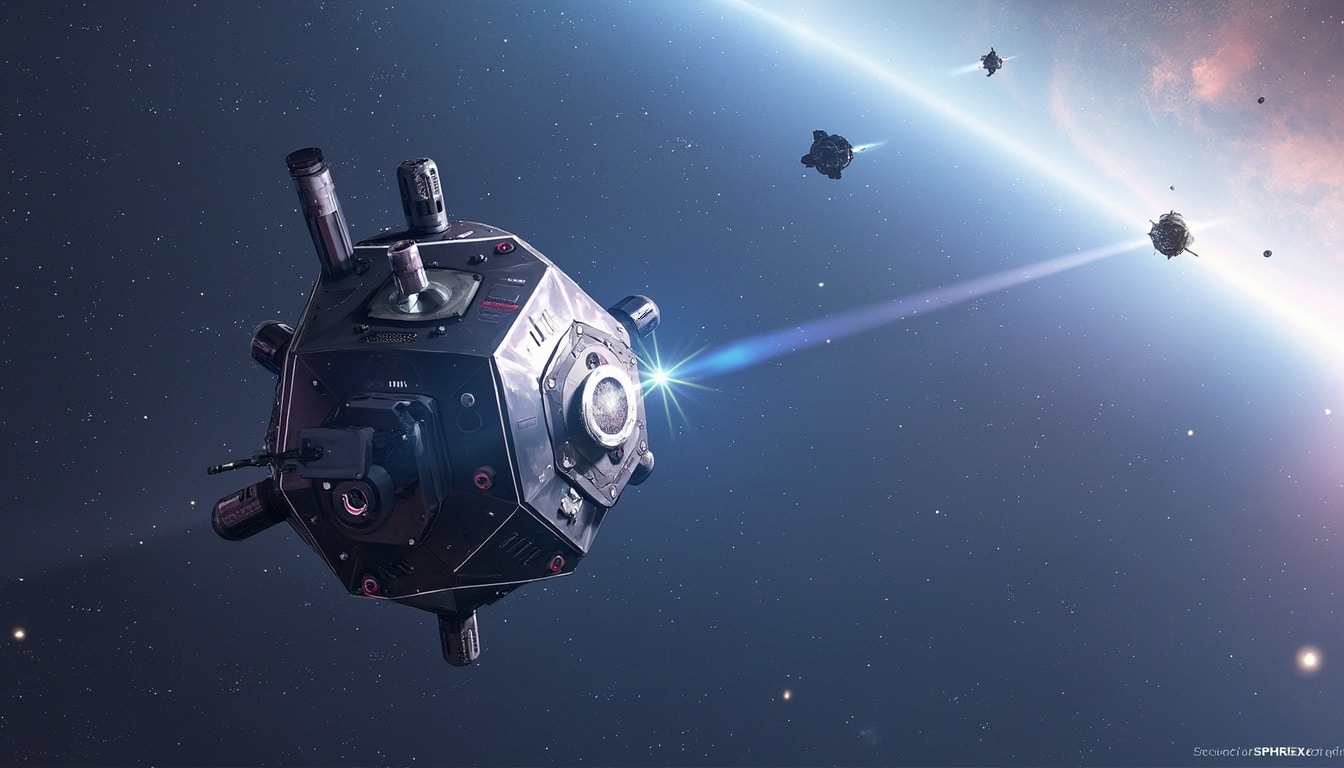The exploration of space has long captivated our imagination, pushing the limits of our understanding of the universe. As we stand on the brink of a new era in astronomy, the anticipated launch of NASA’s new telescope aims to uncover profound truths about our existence and the cosmos. The telescope, named SPHEREx, is designed to investigate the fundamental origins of the universe, exploring not only how galaxies formed but also delving into life’s mysteries across the cosmos. With its cutting-edge technology and ambitious mission objectives, SPHEREx promises to reshape our knowledge while paving the way for future discoveries in space science.
This groundbreaking telescope is set to launch soon, unleashing a wave of excitement within the scientific community and beyond. It will conduct an all-sky survey aimed at creating an expansive map of cosmic history, searching for clues tethered to the very fabric of our reality. As SPHEREx embarks on its journey, it will allow astronomers to explore crucial questions surrounding our universe, including the events that led to its inception. Driven by the desire to answer these universe questions, SPHEREx stands alongside other monumental space programs like the NASA Hubble and NASA James Webb telescopes as a vital instrument for cosmic exploration.
NASA’s SPHEREx: A Leap in Telescope Technology
SPHEREx represents a significant advancement in new telescope technology, boasting an 8.5-foot diameter and a highly efficient all-sky survey capability. This telescope is not just an improvement over its predecessors; it possesses unique features that differentiate it from existing observatories. According to Beth Fabinsky, the deputy project manager for SPHEREx, it will observe the entire universe four times throughout its two-year mission. This extensive data coverage promises unparalleled insights into cosmic phenomena and the overall formation of our universe.

The Significance of an All-Sky Survey
The all-sky survey approach undertaken by SPHEREx opens up new opportunities to analyze infrared light—a form of radiation invisible to the human eye. This capability allows the telescope to observe celestial bodies and phenomena that traditional optical telescopes may miss. By detecting longer wavelengths of light, SPHEREx holds the potential to uncover vital clues about the early universe, including the processes that led to the formation of galaxies and the distribution of dark matter.
One of SPHEREx’s key objectives will be to source the building blocks of life by analyzing the cosmic dust and ice present in various regions of space. Such investigations may even reveal signs of organic materials that could potentially harbor life. This endeavor reflects the NASA mission objectives surrounding the search for extraterrestrial life, highlighting humanity’s innate curiosity and desire to comprehend our place in the universe.
Understanding the Universe: From the Big Bang to Galaxies
At the heart of SPHEREx’s mission lies the quest to understand how the universe began and evolved. The Big Bang theory posits that an extraordinary expansion initiated the universe as we know it, but the specific triggers behind this expansion remain shrouded in mystery. By employing SPHEREx’s capabilities, astronomers hope to map the cosmic events that characterized this transformative era, providing invaluable insights into how stars and galaxies developed over time.

Mapping Cosmic History
Mapping cosmic history is no small task. As SPHEREx scans the skies, it will collect vast amounts of data, enabling researchers to make connections across different cosmic events. For example, the telescope may uncover correlations between the formation of stars and galaxies in various regions of the universe, leading to a deeper understanding of the intricate web that ties everything together.
This investigative journey holds considerable significance in addressing profound questions. What caused the initial fluctuations that led to the formation of galaxies? How is dark matter distributed throughout the universe? With SPHEREx’s ability to gather a comprehensive dataset of cosmic structures, answers to these existential inquiries may finally become illuminated.
Comparing Telescopes in Cosmic Exploration
When discussing space exploration telescopes, it is essential to recognize the contributions of previous missions such as the NASA Hubble and the recent NASA James Webb telescope. Both have advanced our knowledge tremendously; however, SPHEREx ventures into new territory with its specific mission objectives aimed ultimately at mapping and understanding fundamental cosmic origins.
Rather than merely focusing on the distant universe, SPHEREx will look at nearby cosmic bodies as well, allowing scientists to compare the current state of the cosmos with its earlier history. This comparative analysis among different celestial phenomena represents a monumental leap in our understanding of the universe. Observations from SPHEREx will complement findings from previous telescopes and facilitate a more holistic understanding of our cosmic environment.
The Importance of Cosmic Collaboration
The extraordinary potential SPHEREx possesses further underscores the need for collaborative efforts in space science. Observations made by SPHEREx can inform and enhance the research conducted by other projects, highlighting the interconnectedness of scientific exploration. As telescopes share information, the quest to answer humanity’s deep-rooted questions will gain momentum, bolstering our understanding of space.
Space Science Discoveries and Future Implications
The outcomes of SPHEREx’s mission are anticipated to extend far beyond mere academic inquiry. Whether by uncovering evidence of organic materials or elucidating the processes of cosmic expansion, the implications of space science discoveries through SPHEREx are boundless. The knowledge acquired could influence our perspective on life beyond Earth and the innovative technologies needed for future exploration missions.

Preparing for the Launch: Public Interest and Engagement
The upcoming launch of SPHEREx promises to capture the public’s imagination, akin to historic moments like the Apollo missions or the launch of the Hubble Space Telescope. With each passing year, interest in space exploration has expanded, fueled by platforms like NPR that provide insights into scientific advancements. The launch will mark a new chapter in our quest for knowledge, inviting enthusiasts, students, and the general public to engage with the wonders of the cosmos.
Finally, SPHEREx illuminates the paths that will lead humanity toward future discoveries. Each data set, every analysis, and all findings together will constitute the bricks that make up our understanding of the universe. As we prepare for the launch of this powerful telescope, excitement mounts to explore not just the universe, but also our existence within it.




Leave a Reply